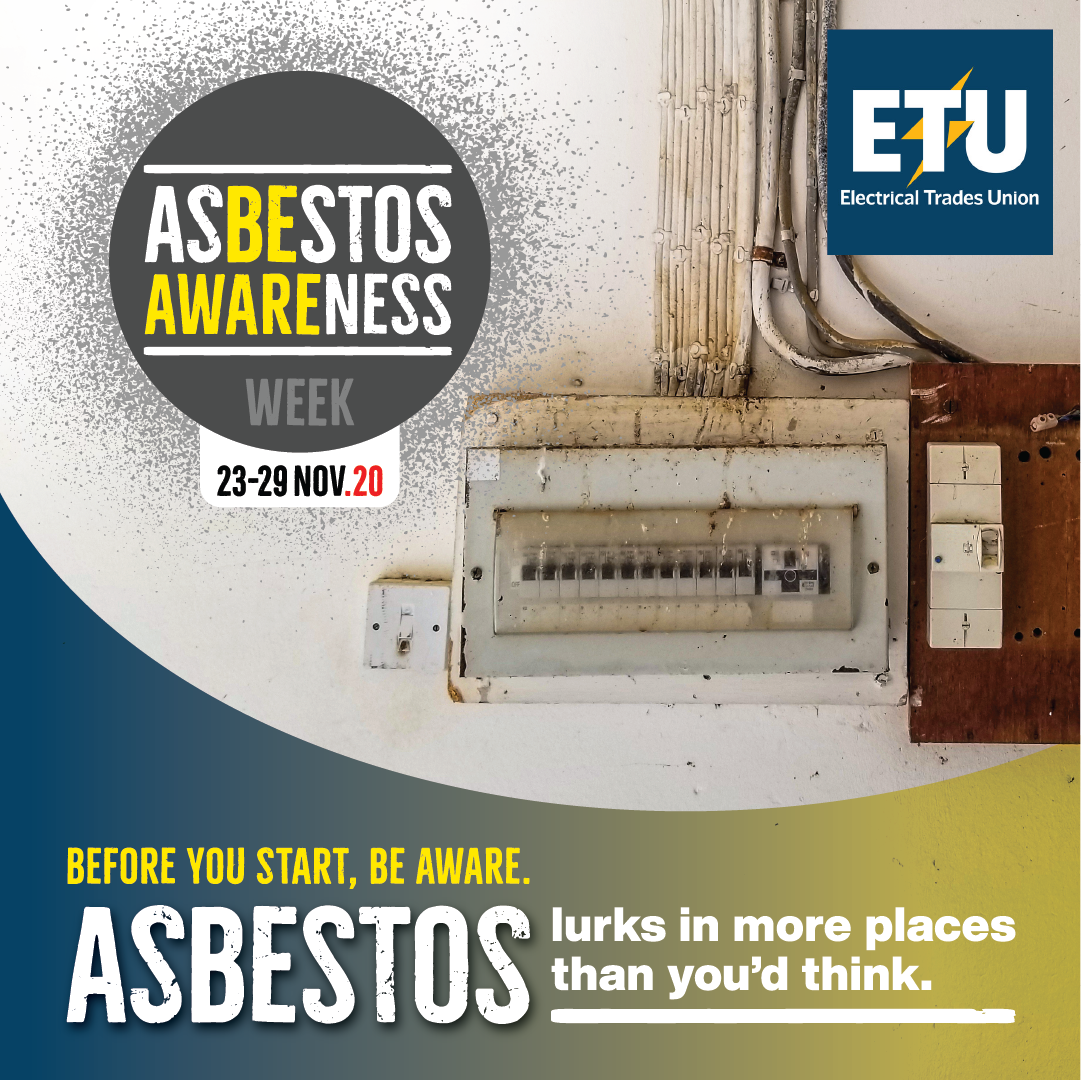23-29 November was Asbestos Awareness Week, so we’re encouraging our members to be more aware of asbestos when doing work, or even in your home.
If a house was built or renovated before 1990, there is a good chance it has some asbestos.
Did you know it’s often found lagging around pipes, inside fuse boxes or as part of ventilation shafts?
Work health and safety (WHS) laws prohibit work involving asbestos apart from in specific circumstances where you are required to follow strict safety rules.
The law may also prevent you from removing asbestos yourself, and if you are allowed, you must follow strict safety precautions and use the right Personal Protective Equipment.
Commercial and public buildings built before a certain date are required to have an asbestos register – but that’s not the case for homes, even though they are often workplaces too.
Where might asbestos be in a home? You can find out here.
Asbestos becomes dangerous once the fibres are disturbed, become airborne and then inhaled. This can happen if you’re sanding, drilling, cutting or sawing asbestos.
Asbestos is a known carcinogen and inhaling asbestos fibres can cause several life-threatening diseases including pleural disease, asbestosis, mesothelioma and lung cancer. Each year in Australia, around 4,000 people die from asbestos related illnesses.
Don’t risk the possible health effects of asbestos exposure. The World Health Organization says there is no known safe level of exposure to asbestos fibres.
Watch this video about asbestos exposure in the workplace here.
You wouldn’t do electrical wiring without training, the same is true for handling or removing any asbestos. It’s always safer – and usually cheaper too – to call in an asbestos professional.
Union action against asbestos
This year the Union took action on many sites against asbestos
In NSW, an ETU site inspection detected asbestos on the major Sydney infrastructure project M4-M5 Link, after members raised concerns.Union officials documented contaminated soil before reporting the asbestos to SafeWork NSW.
The regulator confirmed ETU concerns, with an Improvement Notice noting “workers may be exposed to … inhalation of asbestos fibres.”The exposed asbestos may be friable, the mineral’s most deadly form, Safe Work said.
Builder Lendlease was told to take several actions to manage risks associated with asbestos fibres.
The ETU also backed members at Balmain Shipyard who insisted on strict safety protocols after asbestos was found in three Indonesian-built ferries.
The Balmain facility will maintain the vessels which are part of the Sydney Ferries fleet operated by Transdev.
Unions banned the ferries after asbestos was identified in gaskets when the ships reached Australia. The gaskets were removed but Transdev cannot guarantee the ferries are 100 % asbestos-free.
Please contact your state branch of the ETU if you think you have been exposed to asbestos or are faced with an asbestos related issue within your workplace.
Find out more about asbestos in your state or territory below:
TAS: www.worksafe.tas.gov.au/asbestos-safety
WA:www.commerce.wa.gov.au/worksafe/asbestos-frequently-asked-questions
